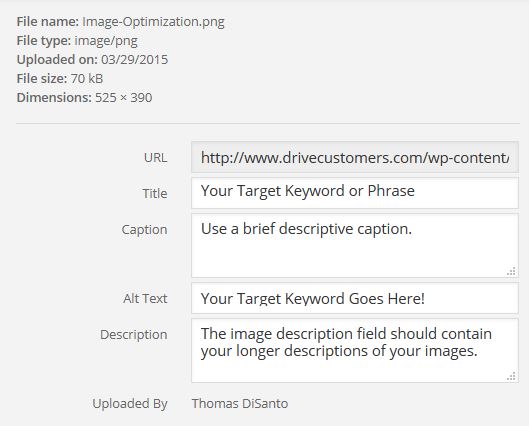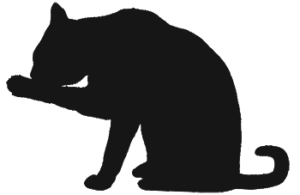If you are utilizing a Content Management System (CMS) such as WordPress or Joomla, you have several good options for including some advanced SEO tactics as a part of your image’s meta information. These include several key ingredients that directly impact your website’s SEO friendliness such as Alt Text, Image Title and Image Description fields which have a very positive impact overall on your websites SEO relevancy and assist in getting your website ranking highly on the search engine results pages (SERPs).
I highly recommend that you optimize your images upon upload whenever you can, making your image’s meta information as relevant as possible to the context in which the image is being utilized. As with all SEO tactics, be as specific and meaningful as you can and never attempt to ‘over-stuff’ your meta information with semi-relevant keywords. Be frugal, thoughtful and exercise caution whenever and wherever keywords are concerned.
Here are a few crucial tips:
 1. Always optimize the File-name. If you’re using a stock image or an image uploaded from your DSLR Camera, it will most likely have a file-name that is a combination of letters and/or numbers that looks something like this: 33102252f.jpg. What we need to do is change the file name to be more relevant to the context in which it is being used, without looking unnatural. It is acceptable to use your target keyword for the file-name, as long as it is relevant to the context. So your should change your file name to: your-target-keyword.jpg.
1. Always optimize the File-name. If you’re using a stock image or an image uploaded from your DSLR Camera, it will most likely have a file-name that is a combination of letters and/or numbers that looks something like this: 33102252f.jpg. What we need to do is change the file name to be more relevant to the context in which it is being used, without looking unnatural. It is acceptable to use your target keyword for the file-name, as long as it is relevant to the context. So your should change your file name to: your-target-keyword.jpg.
2. Use your target keyword for the Title of the image. Keep it short, clean, relevant, meaningful and simple. Do not try to stuff your image titles with keywords. This will backfire and have an adverse effect on your efforts to rank.
3. Use a brief descriptive Caption. Many Content Management Systems such as WordPress allow you to include ‘captions’ with your images. This is usually optional, but it is yet one more way to include some high quality descriptive keywords or phrases along with your image. Take advantage of this, but be cautious to avoid over-optimizing. If you feel like you’re image optimization is being ‘over cooked’ this is the field you should consider dropping.
4. Always include Alt Text! Google and others search engines cannot see images and so they rely heavily on “Alt Text” to determine the content of the image. What is Alt Text? Alt Text is meant to be an alternative information source for those people who have chosen to disable images in their browsers and those user agents that are simply unable to view the images. Alt Text is not the same as your Image Title and should not contain the same keywords and/or phrases. Alt Text should always be descriptive, as if you were explaining the contents of the image to someone who was visually impaired. Keep it short and sweet and limit it to one brief sentence.
5. The image Description field should contain your longer descriptions of your images. I’d also consider viewing this data field as a means of cataloging your images for your own internal use. This is a useful feature, as someday you may need to sift through hundreds of thumbnails and using the description field well can really help you find that image you might be looking for.

